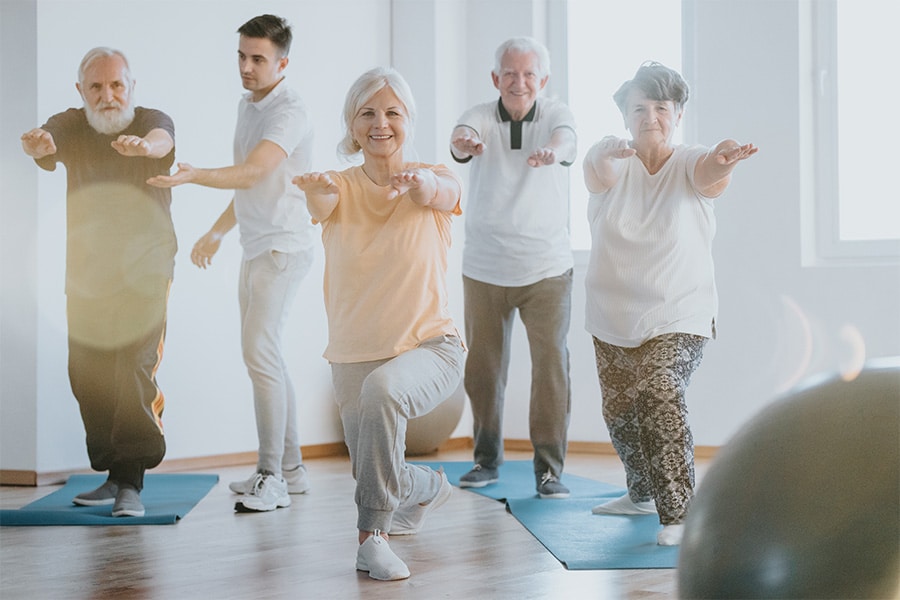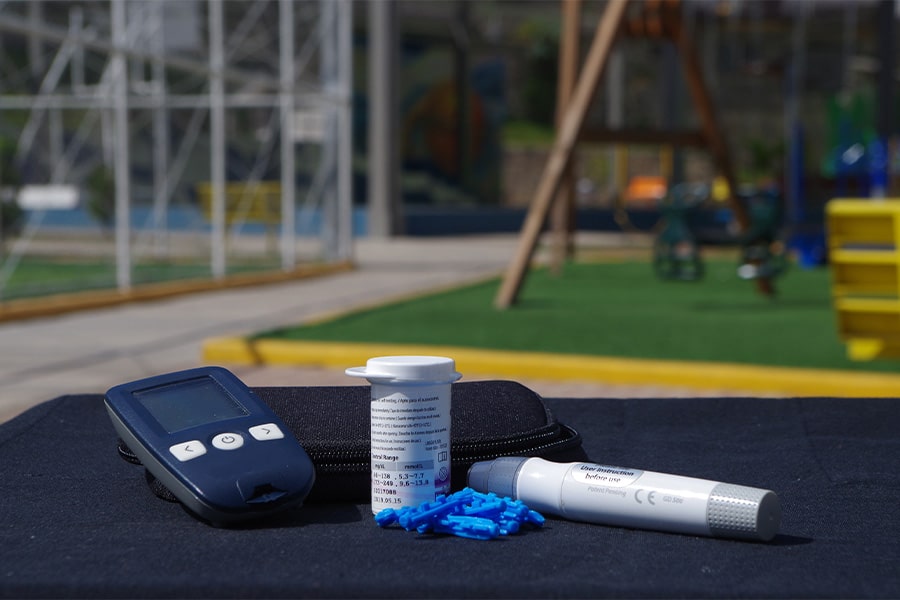Did you know that between August 4th and 10th 2021, it is OCD and Anxiety Disorder week? It is a week dedicated to OCD and anxiety disorder sufferers to raise awareness and educate individuals about the conditions and the treatment options that is available for them. As Sydney is currently in a lockdown, it is especially important to be aware and recognise symptoms of anxiety to ensure that an optimal management plan is in place. So have a read about anxiety disorder – a condition that currently affects one in seven Australians.
Anxiety is mental health condition which causes a physical response from the body to threats or perceived threats. This can cause an increase in breathing and heart rate as well as mental responses such as excessive fears, worries or obsessive thinking. Anxiety isn’t usually caused by a single factor but a combination of different reasons. This includes:
- Family history of mental health conditions: individuals who experience anxiety, may have a genetic predisposition towards anxiety which could be inherited from a family member.
- Personality factors: Certain personality traits can contribute to having anxiety such as perfectionists, lack of self-esteem or wanting to control everything.
- Ongoing stressful events: such as work / family changes, physical injuries, death or loss of a loved one.
- Physical health problems: Such as hypertension, heart disease, diabetes and asthma.
- Other mental health conditions: Individuals may experience anxiety on its own, however it is common to experience more than one mental health condition such as depression and anxiety together.
- Substance use: Alcohol or drug misuse can aggravate anxiety systems.
The most common types of anxiety disorder include:
- Generalised Anxiety Disorder: A person feeling anxious on most days for six months or longer.
- Social Anxiety: Avoidance of social situations or experiencing the feelings of intense fear of being criticised or embarrassed from everyday situations such as public speaking.
- Specific Phobia: Feeling very fearful of a specific object or situation and may go to extreme lengths to avoid it.
- Panic Disorder: Also known as an anxiety attack, is the feeling of been overwhelmed and often uncontrolled feelings of anxiety with a range of physical symptoms such as shortness in breath or chest pain.
Unfortunately, the majority of individuals with an anxiety disorder avoid treatment and do not seek help. A common reason for this is the stigma that is associated with mental health illness, which is often caused by a lack of awareness, lack of education, lack of perception and the complex nature of the illness. Another common reason for avoiding treatment is that individuals may find it difficult discussing how they are feeling with their family, friends or a health profession, fearing that they may be judged or associated with a mental health illness.
According to the World Health Organisation, 3.6% or 264 million individuals around the world have an anxiety disorder and only around one-third of those individuals seek treatment. It is important to recognise the symptoms and start treatment as soon as possible as early intervention can help:
- Prevent or reduce the progression of the anxiety disorder.
- Reduce the effects on activities of daily living.
- Improve diagnosis and treatment options.
Individuals usually seek pharmacotherapy or psychotherapy as a form of treatment for anxiety disorder, however did you know that exercise can also be another form of treatment? It can be use either as a solo form of treatment or in combination with pharmacotherapy and psychotherapy treatment to help manage anxiety disorders or even prevent the onset of anxiety. Research has shown that individuals who engage in regular vigorous exercise were 25% less to develop anxiety disorder over the next five years. Individuals who engage in at least 30 minutes of aerobic training a day, three to five days a week can significantly improve anxiety symptoms. High-intensity training have been found to be more effective than low intensity training, however individuals will still experience the benefits of exercise with a low-intensity routine. Some other benefits of exercise include:
- Release of “feel-good” endorphins.
- Moving your body to reduce muscle tension, resulting in lowering the body’s contribution to feeling anxious.
- Lowering sympathetic nervous system activity
- Increasing the activation of the frontal regions of the brain – which is responsible for controlling the amygdala (our emotional response).
Under the Australian Medicare Scheme, individuals can create a Mental Health Treatment Plan with their GP, which allows them to claim up to 20 sessions with a mental health professional each calendar year. This is advantageous for individuals who want to seek early intervention or require guidance from a professional to help manage their anxiety disorder. In addition, individuals also can receive up to 5 Exercise Physiology sessions under the Medicare Scheme per year. This will allow the individual, especially those who have limited experience with exercise, to seek out an Exercise Physiologist who can work together with the doctor and other treating parties to formulate an exercise program tailored specifically for the individual.
Other services that individuals can access include:
- Head to Health:a wide variety of digital mental health resources from trusted service providers as well as phone services
- Beyond Blue Support Service:24 hours / 7 days a week phone service as well as information about different mental health diagnoses.
- PHONE: 1300 22
- beyondblue.org.au/get-support/get-immediate-support
- Headspace:tailored for young individuals
- Lifeline:24 hours / 7 days a week counselling service.
- PHONE: 13 11 14
- lifeline.org.au/
- Blackdog Institute:mental health resources and support tools
Author: William Kam, AEP ESSAM
Sources:
- Anderson, E., & Shivakumar, G. (2013). Effects of exercise and physical activity on anxiety. Frontiers in psychiatry, 4, 27. https://doi.org/10.3389/fpsyt.2013.00027
- Anxiety Disorder and Facts Statistics. (2020). Retrieved 28 July 2021, from https://www.therecoveryvillage.com/mental-health/anxiety/related/anxiety-disorder-statistics/#:~:text=The%20prevalence%20of%20anxiety%20disorders%20drops%20to%2020.6%20percent%20for,in%20teens%20are%20relatively%20common.
- Aylett, E., Small, N. & Bower, P. Exercise in the treatment of clinical anxiety in general practice – a systematic review and meta-analysis. BMC Health Serv Res18, 559 (2018). https://doi.org/10.1186/s12913-018-3313-5
- Beyond Blue. (2021). Retrieved 28 July 2021, from https://www.beyondblue.org.au/
- Jayakody, K., Gunadasa, S., & Hosker, C. (2014). Exercise for anxiety disorders: systematic review. British journal of sports medicine, 48(3), 187-196.
- Mental health care and Medicare. Retrieved 28 July 2021, from https://www.servicesaustralia.gov.au/individuals/subjects/whats-covered-medicare/mental-health-care-and-medicare
- Schoenfeld, T. J., Rada, P., Pieruzzini, P. R., Hsueh, B., & Gould, E. (2013). Physical exercise prevents stress-induced activation of granule neurons and enhances local inhibitory mechanisms in the dentate gyrus. Journal of Neuroscience, 33(18), 7770-7777.
- Shrivastava, A., Johnston, M., & Bureau, Y. (2012). Stigma of Mental Illness-1: Clinical reflections. Mens sana monographs, 10(1), 70–84. https://doi.org/10.4103/0973-1229.90181



